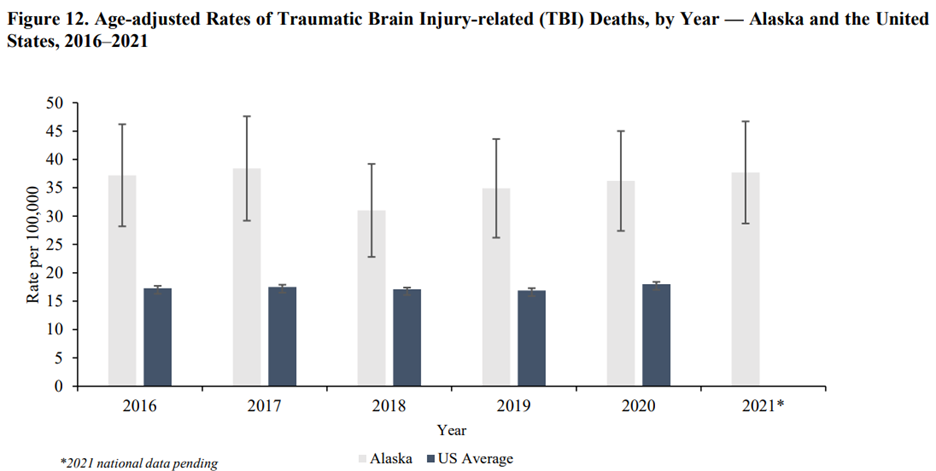At a glance
This success story, Alaska: Aligning Brain Injury Awareness, Prevention, and Screening Efforts Across the State, highlights how Core SIPP implements, evaluates and disseminates injury prevention strategies into action.
What did Alaska do?
Alaska Core State Injury Prevention Program (Core SIPP) coordinated traumatic brain injury (TBI)-related communication efforts across state partners. The goal is to improve knowledge about TBI, encourage early detection and treatment of these injuries, and prevent and reduce these types of injuries across the state. Alaska Core SIPP created a communications plan to ensure partners share data, evidence-based information, and resources with focus populations. The focus populations for this project were youth in schools, youth in the juvenile justice system, parents, and teachers.
How did Alaska improve knowledge of traumatic brain injuries?
Alaska Core SIPP created the "Defend Your Brain" public education campaign across the state. This campaign included creating a TBI website along with 36 social media messages. The campaign focused on early detection, treatment, and prevention of TBI. The website and social media messages helped people find resources and support after a brain injury. Alaska Core SIPP shared these materials across various channels including the Alaska Department of Health Facebook and Instagram pages, websites, TV, YouTube, and Snapchat between April and June 2022. This strategy resulted in over 2,650,000 displays of online messages and over 4,700 visits to the Defend Your Brain campaign website. The social media campaign alone reached 225,181 Alaskans.
Alaska Core SIPP hired a Youth Brain Injury Coordinator in September 2022 hosted by Alaska's educational resource agency, the Southeast Regional Resource Center. This position focuses on supporting the Division of Juvenile Justice and building school supports for children who experience TBI. The Youth Brain Injury Coordinator also:
- Assists with the formation of brain injury teams in the schools.
- Holds presentations and educates students and families about TBI.
- Helps with school education plans, accommodations, and behavior strategies.
- Eases communication between school, medical, and juvenile corrections staff.
- Creates flyers about the Youth Brain Injury Program and what it offers, such as training for teachers on brain injury and best practices in the classroom.
- Spreads awareness of new brain injury resources in Alaska for educators, parents, and school support staff.
Why did Alaska create this campaign?
Alaska has one of the highest rates of TBI in the nation. Alaska TBI-related mortality was the highest in the nation and more than twice the national average between 2016 and 2021.

The Alaska Department of Health (AK-DOH) developed brain injury awareness, prevention, and screening efforts to focus on disproportionately affected populations. About 40% of youth involved in the juvenile justice system have a history of brain injury. The AK-DOH Core SIPP staff coordinated a brain injury awareness public education campaign, developed a standard process for brain injury screening in the juvenile justice system, and connected youth who experienced TBIs to community and school-based supports.
